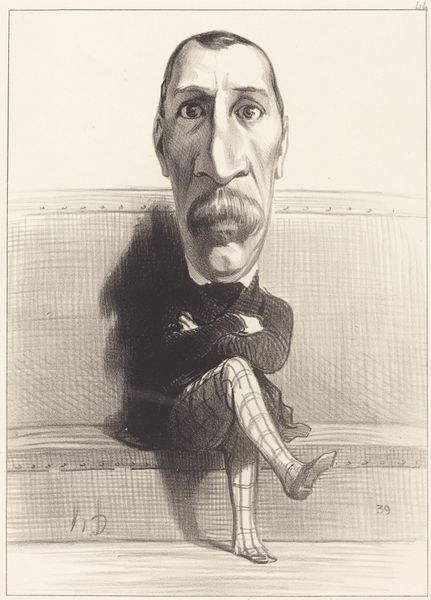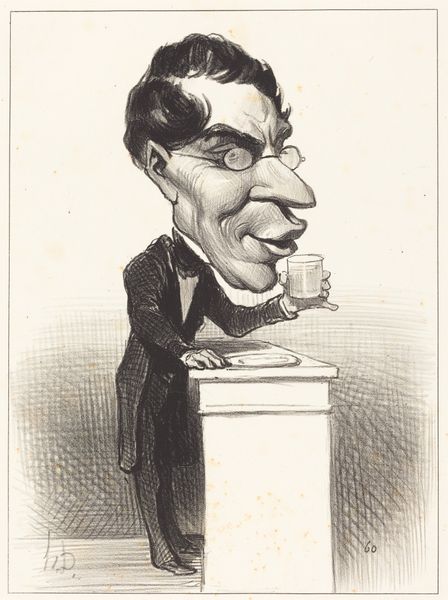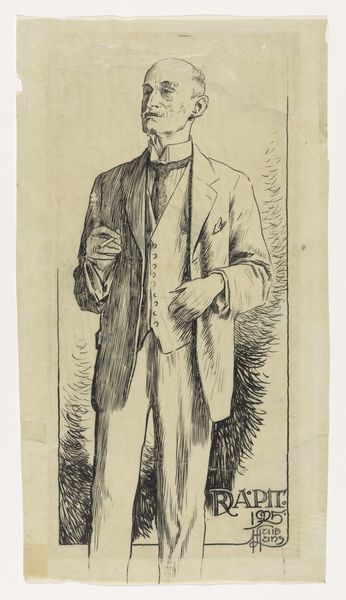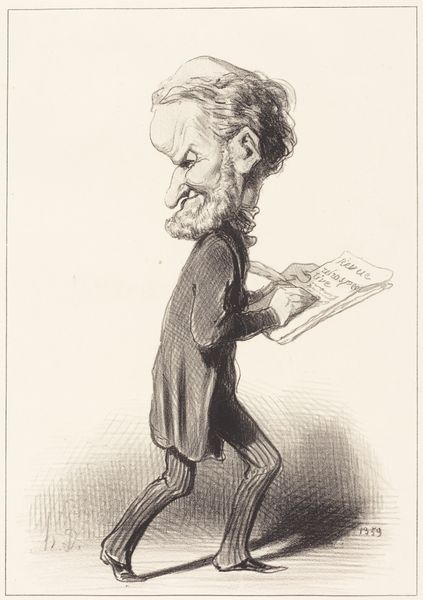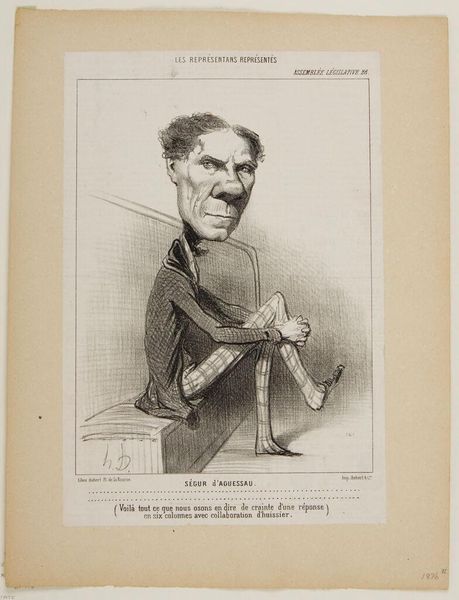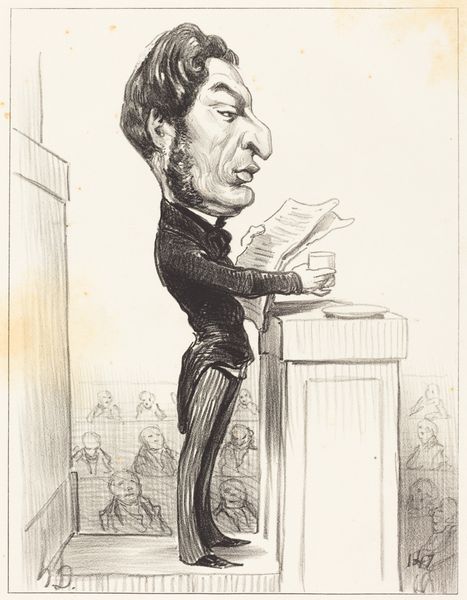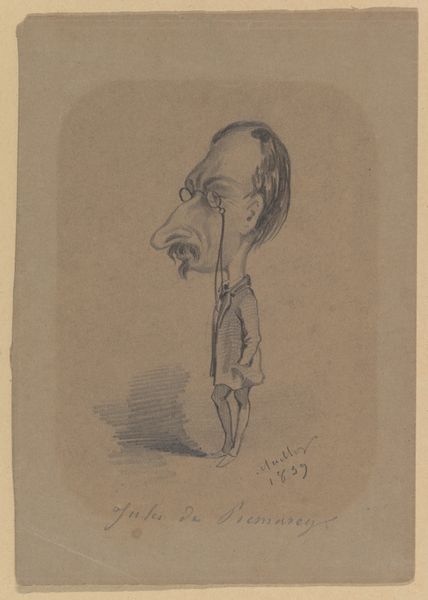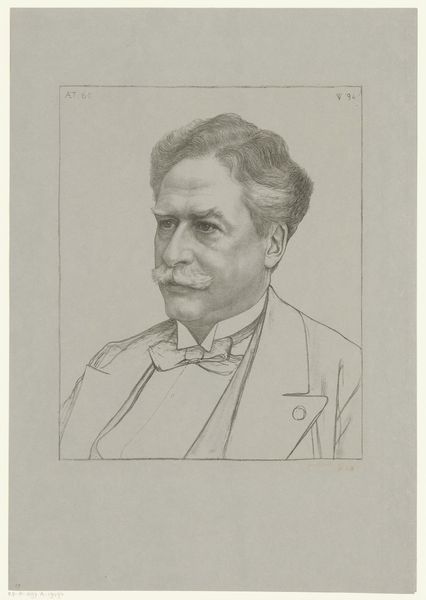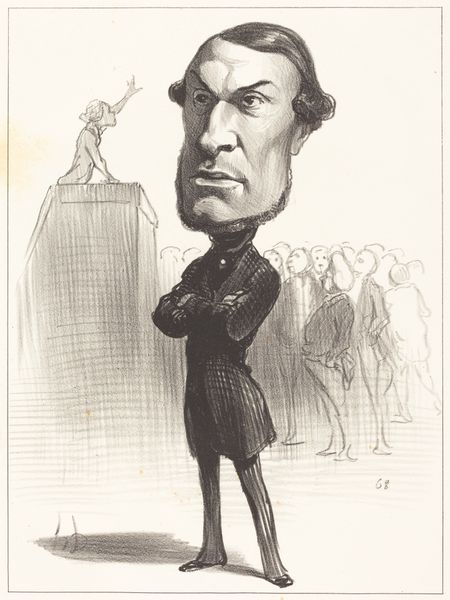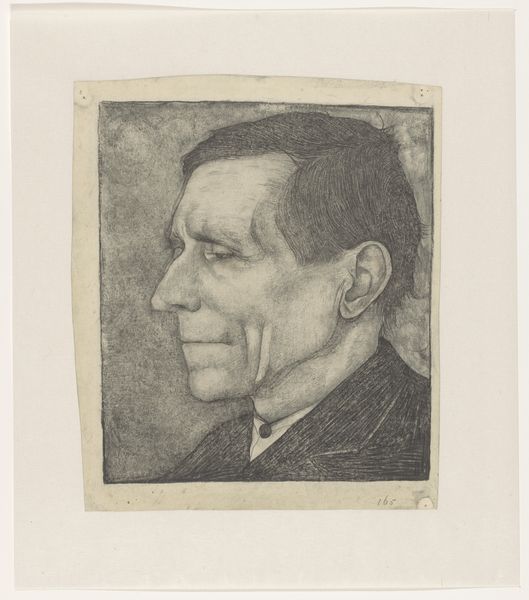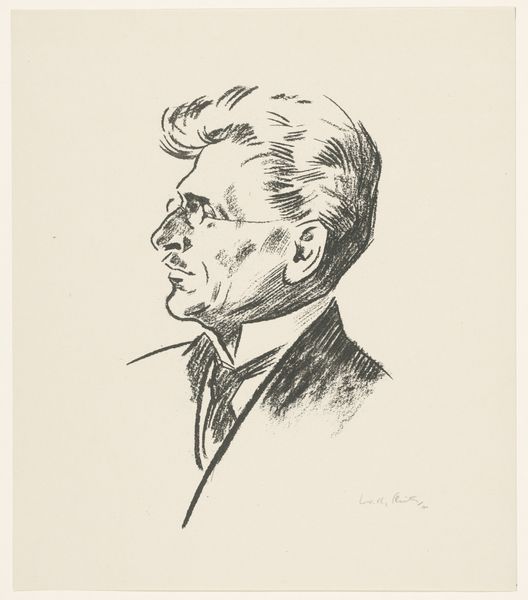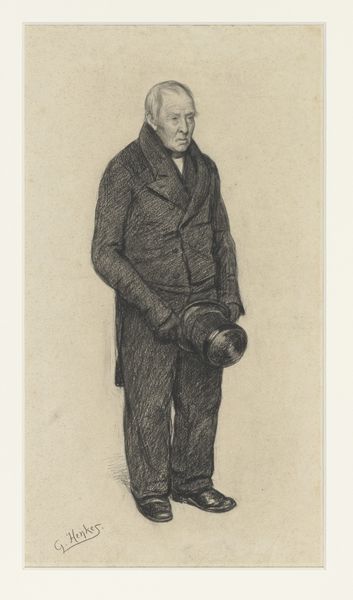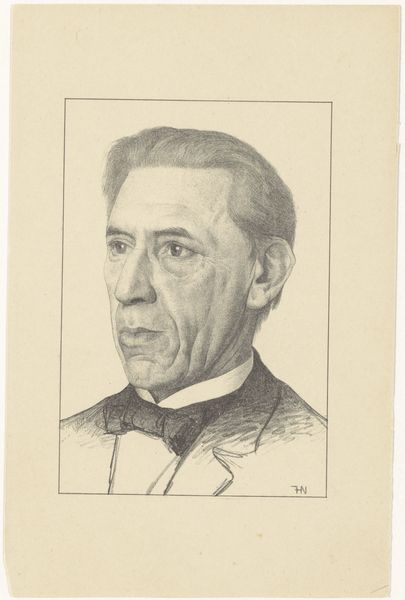
drawing, lithograph, print, pencil
#
portrait
#
drawing
#
lithograph
# print
#
caricature
#
caricature
#
pencil drawing
#
pencil
#
portrait drawing
#
genre-painting
#
academic-art
Copyright: National Gallery of Art: CC0 1.0
Editor: This is Honoré Daumier's "R.P.L. Ségur d'Aguesseau," a lithograph from 1850. It’s a caricature, and what immediately strikes me is the exaggerated form achieved through the lithographic process – the way the artist coaxes this satirical depiction out of the stone. What do you make of it? Curator: The key lies in unpacking the processes of lithography itself and its role in democratizing imagery in 19th-century France. Think about the material: greasy crayon on stone. It allowed artists like Daumier to mass-produce satirical images, disseminating critiques of power structures to a wider audience than ever before. The choice of lithography isn't just a technical one, it's a social statement about accessibility and the power of reproducible images. How does Daumier utilize the unique qualities of lithography to comment on his subject, Ségur d'Aguesseau? Editor: The heavy shading, almost like cross-hatching, adds depth and intensity. The textures created with the crayon are amazing. It allows for fine detail alongside bold, dark areas that really emphasize the… well, almost grotesque features of the subject. I can see how the medium contributes directly to the message, heightening the satire. But isn’t the technique in tension with its context? Is it really accessible when only certain folks understand art and consume images in such ways? Curator: Precisely! That’s the complexity of material analysis. The *intention* was accessibility, yet the reality hinges on social and economic factors determining who could engage with these prints. So, considering Daumier's labour - creating the original image, the printing process, the distribution - whose interests are being served here, ultimately? What is the artist trying to convey? How can satire be political when the political sphere seems so disconnected? Editor: It sounds like unpacking a relatively simple image ends up revealing a complex interplay between artistic intent, means of production, social messaging and potential consumption by 19th-century French citizens. So, much to consider! Curator: Yes, seeing art as material production makes us critically assess art beyond its aesthetic qualities, leading to critical questions about access, power and social impact.
Comments
No comments
Be the first to comment and join the conversation on the ultimate creative platform.
